Publications
Please see my full list of publications.
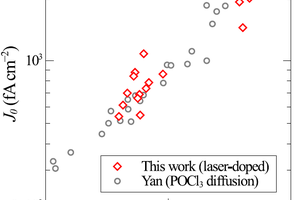
Laser contacts from POx/Al2O3 passivation stacks
| Aug 20, 2020
• n+ laser doping demonstrated from POx/Al2O3 passivation stacks on silicon. • Metallised J0 of 540 fA cm−2 for n+ laser-doped region with Rsheet of 39.5 Ω/□. • Consistent with values for POCl3 furnace diffusions, indicating minimal defects. • Same POx/Al2O3 stack provides J0 of 2.5 fA cm−2 on undiffused planar surfaces. • 23.6% simulated efficiency for laser-doped n-type PERL cell based on POx/Al2O3.

Destructive Reverse Bias in Perovskite Tandem Modules
| Jun 11, 2020
We demonstrate how perovskite hysteresis can result in permanent reductions in power output in perovskite/silicon tandem modules—including irreversible hotspot-induced damage—from only brief periods of shading.
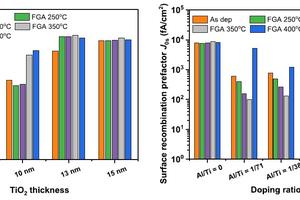
Impact of Al Doping on Surface Passivation of TiOx
| Apr 13, 2020
In this work, we find that the crystallization of ALD TiOx is very sensitive to the film’s thickness, where a small increase in TiOx thickness can trigger a phase change from amorphous TiOx into anatase, which causes a significant increase in J0s. More importantly, we demonstrate that the incorporation of Al ions into the TiOx films inhibits crystallization, which in turn retains excellent passivation for thicker TiOx.

Predicting realistic annual yield for solar modules
| Sep 12, 2019
• Optimizing module design for a maximum annual performance. • Detailed gain and loss analysis from cell under STC to module in real environment. • Understanding the impact of module material on the annual module yield. • Impact of angular light, temperatures, lower irradiances on module performance. • Impact of weather condition (ambient temperature, wind speed) on module performance.

Methodology for Generating High Time Resolution Typical Meteorological Year Data for Accurate Photovoltaic Energy Yield Modelling
| Jul 30, 2019
Accurate energy yield prediction is of utmost importance for commercial scale photovoltaic systems. One key parameter crucial to the prediction accuracy is the quality of solar radiation data. Most energy yield prediction models rely on Typical Meteorological Year data with maximum temporal resolution of one hour. In this work we develop a methodology to generate Typical Meteorological Year data with much higher time resolution using gap filling methods that aim to maintain high-quality solar radiation data for photovoltaic yield modelling.

State-of-Energy-Research Conference (SoERC) 2019
| Jul 03, 2019
The SoERC conference is Australia's first research-only conference that highlights the latest advances in energy research. The conference takes place on 3rd and 4th July at the Australian National University, Canberra.

Lifetime energy yield and economic viability of perovskite/silicon tandem modules
| Apr 29, 2019
Impact of perovskite solar cell degradation on the lifetime energy yield and economic viability of perovskite/silicon tandem modules
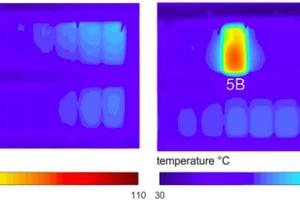
Analysis of Hotspots in Half Cell Modules Undetected by Current Test Standards
| Mar 07, 2019
Hotspots are a major source of failure for photovoltaic modules in the field. The current standard for module testing IEC 61215-2 can leave critical hotspots undetected in half-cut solar cell modules.
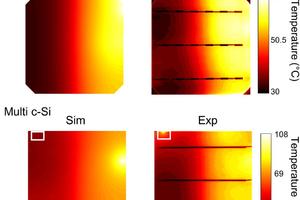
2-D Hot Spot Temperature Simulation for PV Modules
| Jul 24, 2018
A two‐step method to simulate the spatially resolved temperature of a partially shaded cell in a crystalline silicon photovoltaic (PV) module is presented and tested.
Phosphorus diffused LPCVD polysilicon passivated contacts
| Jul 06, 2018
We present a passivated contact technology based on polysilicon deposited using low pressure chemical vapour deposition (LPCVD) over an ultra-thin silicon dioxide layer, which achieves an excellent surface passivation with implied open-circuit voltage of 735 mV, a recombination prefactor below 1 fA cm−2 and contact resistivity below 1 mΩcm2.
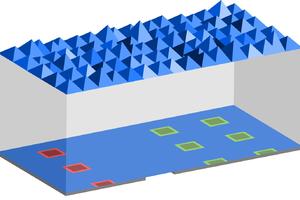
22.8% Efficient Laser‐IBC Solar Cell
| Aug 21, 2017
In this paper, the fabrication of a 22.8% efficient all‐laser‐doped IBC solar cell with localized boron and phosphorus doped contacts is reported.

Characterization of Localized Contacts
| Feb 01, 2017
In this work, we introduce novel test structures and perform numerical simulations to accurately determine the contact properties of 30 μm × 30 μm-sized laser-doped localized contacts.